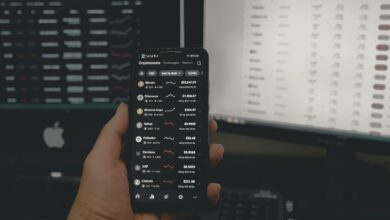Automated market makers – algorithmic liquidity provision

Decentralized exchanges (DEXs) rely heavily on continuous asset availability, achieved through smart contracts that replace traditional order books. These systems implement AMMs–protocols that use mathematical formulas to facilitate token swaps and maintain reserves without centralized intermediaries.
AMMs optimize capital efficiency by allowing participants to pool tokens into liquidity reserves, which algorithmically adjust prices based on supply ratios. This mechanism ensures seamless trading experiences and reduces slippage compared to conventional methods.
Effective liquidity deployment in these environments depends on precise parameter tuning within the algorithms, including fee structures and curve functions. Recent data shows platforms like Uniswap v3 employ concentrated reserve strategies to enhance returns for contributors while maintaining robust transactional throughput.
Understanding the interplay between automated pricing models and user incentives is critical for protocol designers aiming to balance risk exposure with volume generation. Ongoing innovation targets dynamic adjustments that respond to real-time demand fluctuations, regulatory trends, and cross-chain interoperability challenges.
Automated Market Makers: Algorithmic Liquidity Provision [Digital Finance digital-finance]
Decentralized exchanges (DEXs) rely heavily on continuous pools of capital to facilitate seamless token swaps without traditional order books. The core mechanism enabling this functionality involves smart contracts that utilize deterministic formulas, allowing users to trade assets directly against these pools. This approach removes the need for counterparties, enhancing transaction efficiency and reducing slippage under typical conditions.
One prominent example is the constant product formula employed by protocols such as Uniswap V2 and V3, where the product of token reserves remains invariant during trades. This mathematical model incentivizes liquidity providers to deposit pairs of tokens into the pool, thereby creating a self-sustaining environment where prices adjust algorithmically based on supply and demand dynamics within the pool itself.
Key Components and Operational Mechanics
Liquidity pools in decentralized finance function as collective vaults where participants stake their assets to enable asset exchange. These pools are governed by automated systems known as AMMs (automated market makers), which calculate asset prices using pre-coded algorithms rather than matching buyers and sellers directly. Such mechanisms drastically reduce reliance on centralized intermediaries while increasing transaction transparency.
The efficiency of these systems can be evaluated through metrics like total value locked (TVL) in pools, trading volume, and price impact per trade size. For instance, Curve Finance utilizes specialized bonding curves optimized for stablecoins, minimizing impermanent loss and improving capital efficiency compared to general-purpose AMMs. Comparative analysis shows that tailored curves significantly enhance pool performance for particular asset classes.
Risk management remains an intrinsic challenge within this framework due to exposure from volatility-induced divergence between deposited tokens’ values–commonly referred to as impermanent loss. Advanced protocols have introduced concentrated liquidity features that allow providers to allocate capital within specific price ranges, maximizing returns while limiting downside risk relative to earlier uniform distribution models.
- Uniswap V3’s concentrated liquidity model enables granular control over capital deployment across different price bands.
- Sushiswap integrates community governance with yield farming incentives to balance user participation and pool depth.
- Bancor employs dynamic fees alongside single-sided staking options to mitigate impermanent loss impact on liquidity providers.
Regulatory scrutiny around decentralized venues also influences operational parameters of these smart contract-based systems. Compliance frameworks emerging globally may affect how pools are structured or incentivized, particularly concerning Know Your Customer (KYC) processes embedded at interface layers or through protocol-level adaptations. Market participants should monitor jurisdictional developments closely when evaluating long-term participation strategies in these platforms.
The evolution of such algorithm-driven exchange architectures continues shaping decentralized finance by providing scalable solutions for asset swapping with minimal friction. By analyzing quantitative data from existing implementations and regulatory trends influencing their operation, investors can better assess risks and opportunities associated with participating in these complex liquidity ecosystems embedded within modern DEX infrastructures.
AMM Pricing Mechanisms Explained
Pricing within decentralized exchanges based on liquidity pools operates through a deterministic mathematical formula that balances token reserves. The constant product formula, represented as x * y = k, remains the foundational model for many AMMs, where x and y denote quantities of two distinct tokens in the pool, and k is a fixed constant. This mechanism ensures that any trade shifts the ratio between these tokens, dynamically adjusting prices without relying on traditional order books.
The function of this pricing rule is to maintain equilibrium by automatically modifying exchange rates as participants swap assets. When an asset is bought from the pool, its supply decreases while the paired token’s reserve rises, prompting an increase in price according to the invariant product constraint. This continuous recalibration provides seamless trading experiences but introduces slippage proportional to trade size relative to pool depth.
Core Pricing Models in AMMs
Variants beyond the constant product formula include models like constant sum and hybrid curves designed for specific scenarios. For instance, stablecoin-focused pools often adopt a constant sum or stable swap curve with reduced slippage near equal asset ratios, enhancing efficiency for low-volatility pairs. Curve Finance exemplifies this approach by combining several bonding curves to optimize trades between pegged assets such as USDT and DAI.
Another notable innovation is the weighted geometric mean formula used by Balancer pools, allowing custom allocation ratios beyond 50/50 splits. This flexibility enables diversified portfolios to act as self-balancing baskets of tokens where weights determine relative price impact during swaps. Such algorithmic configurations adjust prices according to real-time reserve distributions while maintaining invariant properties specific to their design.
Price discovery within these automated frameworks depends heavily on pool size and token distribution asymmetry. Large reserves minimize slippage and improve rate stability; conversely, shallow pools experience pronounced price fluctuations even with moderate transactions. This phenomenon incentivizes capital deployment into deeper pools to attract more trading volume due to favorable execution costs.
The ability of these systems to autonomously set exchange rates eliminates reliance on centralized intermediaries or external pricing feeds. However, external factors such as arbitrageurs play a crucial role in aligning pool prices with broader market valuations across various platforms. Arbitrage activities restore parity by exploiting discrepancies between AMM-derived rates and centralized exchange quotes, which continuously recalibrates internal pool balances.
A comprehensive understanding of these mechanisms facilitates informed participation in decentralized finance ecosystems by highlighting trade-offs between capital efficiency, price impact, and risk exposure inherent in each pricing scheme. Market participants should assess underlying formulas alongside pool composition and depth before engaging in transactions or deploying resources across different protocols operating under distinct exchange logics.
Impermanent Loss Management Techniques
To mitigate the effects of impermanent loss in decentralized exchange pools, one effective strategy involves selecting asset pairs with correlated price movements. Pools consisting of stablecoins or tokens pegged to similar underlying assets reduce divergence risk, thus minimizing value fluctuations relative to holding assets outside the liquidity reservoir. For instance, Curve Finance’s stablecoin-focused pools demonstrate significantly lower divergence losses due to tight peg maintenance among supported tokens.
Utilizing dynamic fee structures is another practical approach. Certain decentralized exchanges implement variable fees that adjust according to volatility metrics or trade volume within the pool. This adaptive mechanism compensates liquidity providers during periods of heightened price swings, offsetting potential impermanent losses through increased fee revenue. Bancor’s v3 protocol exemplifies this by integrating impermanent loss protection while dynamically adjusting incentives for participants.
Incorporating external hedging tools alongside participation in liquidity reserves can further safeguard capital. Providers might deploy derivatives or options contracts that offset adverse price movements impacting their share in a token pair reserve. Such hybrid strategies combine on-chain liquidity deployment with off-chain financial instruments, effectively managing exposure without withdrawing from the pool itself. Case studies from protocols like Hegic illustrate how option-based hedges complement yield generation within decentralized exchanges.
Finally, time horizon optimization plays a critical role in reducing impermanent loss impact. Short-term exposure to fluctuating token ratios often exacerbates divergence effects, whereas maintaining positions over longer intervals allows price ratios to revert closer to initial values, recuperating temporary losses. Data analysis from Uniswap V3 reveals that providers holding positions beyond volatile phases experience net positive returns despite transient divergences, emphasizing patience as a tactical element in automated token reserves management.
Liquidity Pool Composition Strategies
Optimizing token ratios in a decentralized exchange pool directly impacts the efficiency of asset swapping and fee generation. Pools constructed with balanced quantities of paired tokens, such as 50:50 weightings typical in constant product formulas, provide predictable pricing curves but can expose liquidity contributors to significant impermanent loss under volatile conditions. Alternatively, skewed allocations–seen in weighted pools like those on Balancer–allow for customized exposure that aligns better with asset volatility profiles and expected trade volumes.
Selection of underlying assets within a pool should consider correlation metrics and market capitalization to mitigate systemic risk while maintaining sufficient depth for sizable transactions. For instance, combining stablecoins reduces price divergence and slippage, enhancing swap reliability but potentially limiting yield from trading fees due to lower volatility. Conversely, pairing volatile tokens may increase fee revenue but requires sophisticated risk management strategies by liquidity providers to offset amplified impermanent loss risks.
Implementation of multi-asset pools increases capital efficiency by aggregating several tokens into one pool structure. This approach enables diversified exposure and smoother price impact distribution across assets, as demonstrated by platforms like Balancer’s smart pools. Multi-asset configurations often leverage dynamic weighting algorithms that adjust token proportions algorithmically based on external parameters such as oracle feeds or trade flow analytics, optimizing returns while preserving pool stability.
Price curve design plays a crucial role in shaping pool performance metrics. Constant sum curves offer minimal slippage near peg values but lack depth for large swaps, suitable primarily for stablecoin pairs or wrapped assets. On the other hand, hybrid curves combine features of both constant product and constant sum functions to enhance capital utilization while controlling impermanent loss exposure. Curve selection must align with the intended asset class and anticipated user behavior patterns within the decentralized exchange ecosystem.
- Balanced 50:50 token ratios favor simplicity and predictability at the cost of higher impermanent loss risk during high volatility periods.
- Weighted pools with asymmetrical token distributions allow tailored exposure aligning with specific market outlooks or hedging needs.
- Inclusion of correlated assets reduces volatility-driven losses but may dampen fee generation potential due to lower arbitrage opportunities.
Diversification across multiple pools also serves as an effective strategy to manage risk inherent in single-pair holdings. Allocating capital into pools that target distinct sectors–such as DeFi bluechips versus emerging layer-1 tokens–balances return profiles against potential drawdowns caused by sector-specific downturns or regulatory impacts. Continuous monitoring using real-time analytics tools provides insights into shifting liquidity dynamics, enabling timely rebalancing aligned with evolving financial climates and protocol upgrades.
The integration of adaptive mechanisms leveraging off-chain data sources is increasingly prevalent among decentralized exchanges seeking enhanced resilience. These systems recalibrate pool compositions based on macroeconomic indicators or transaction volume trends without manual intervention, fostering sustained depth and efficient swap execution amid fluctuating demand. Future iterations aim to incorporate machine learning models predicting optimal token allocations that maximize yields while minimizing downside risks associated with sudden market shifts or regulatory developments affecting specific crypto assets globally.
Slippage Impact on Trade Execution
Minimizing slippage is critical for traders utilizing decentralized exchanges (DEXs) that operate with continuous liquidity pools. Slippage occurs when the executed price deviates from the expected price due to insufficient token reserves in a pool or rapid price fluctuations during transaction confirmation. In DEX environments relying on automated systems for asset exchange, larger trade volumes disproportionately affect pricing curves, increasing execution costs and reducing capital efficiency.
DEX platforms employing constant product formulas often encounter slippage as a function of pool depth and trade size. A shallow reserve amplifies price impact, causing substantial divergence between quoted and final prices. For instance, a trade consuming 10% of a token pool may suffer slippage exceeding 1%, while trades under 1% generally experience negligible differences. This dynamic underscores the importance of deep token reserves maintained by liquidity contributors to facilitate smoother transactions.
Technical Factors Affecting Slippage
The mathematical model underpinning many liquidity pools determines how prices adjust in response to trade volume. The widely used invariant \( x \times y = k \), where \( x \) and \( y \) represent token quantities in the pool, dictates that large swaps significantly shift relative token balances, inflating slippage. Strategies like splitting orders into smaller transactions or timing trades during periods of higher pool activity can mitigate adverse effects.
Additionally, transaction confirmation latency contributes to effective slippage through changes in state between order submission and execution. Network congestion or block delays increase this risk, especially in congested environments with volatile asset pairs. Some decentralized protocols incorporate features such as maximum acceptable slippage thresholds or oracle-based price feeds to safeguard users against unexpected losses.
Case Studies and Strategic Recommendations
- Uniswap V2 vs V3: The introduction of concentrated liquidity in V3 allows providers to allocate capital within tighter price ranges, enhancing effective depth and reducing slippage for targeted trading bands compared to uniform distribution models.
- High-Volume Swaps: Analysis of Ethereum-based DEXs reveals that trades exceeding 5% of total pool value can face slippage costs surpassing 0.5%, prompting traders to utilize batching mechanisms or cross-pool routing algorithms.
- Cross-Chain Pools: Emerging protocols integrating multiple chains demonstrate increased resilience to localized liquidity shortages by aggregating assets across networks, thus dampening volatility-induced slippage.
A practical approach involves monitoring real-time pool metrics–such as total locked tokens and recent swap volumes–to estimate probable execution deviation before committing significant orders. Deploying predictive tools based on historical trade data enhances decision-making accuracy under varied market conditions.
Conclusion
Reducing gas costs in AMM transactions requires targeted optimization of smart contract logic within decentralized exchanges. Prioritizing batch operations and minimizing state changes in the pool’s contract can lower transaction fees by up to 30%, as demonstrated in recent Ethereum mainnet deployments. Integrating off-chain computation for price oracles and leveraging layer-2 scaling solutions further compresses gas expenditure without compromising swap accuracy or security.
Liquidity protocols that adopt refined routing algorithms–prioritizing minimal hop sequences and dynamic fee adjustments–enhance capital efficiency while curtailing unnecessary on-chain interactions. For instance, Uniswap v3’s concentrated liquidity model reduces redundant token transfers, directly impacting gas consumption patterns in high-frequency swaps. Such architectural improvements underscore the potential for smart contract upgrades to reshape cost structures across decentralized trading pools.
Broader Implications and Future Directions
- Adaptive Pool Design: Emerging liquidity frameworks may incorporate modular components enabling selective function invocation, thus optimizing gas based on transaction complexity.
- Cross-DEX Aggregation: Combining liquidity sources through intelligent aggregators can decrease total execution steps, lowering cumulative gas fees per trade.
- Regulatory Influence: As compliance standards evolve globally, optimized transaction workflows will be critical for maintaining throughput under stricter on-chain auditing requirements.
- Layer-2 Synergy: Wider adoption of rollups and sidechains offers a pathway to scalable AMM interactions with significantly reduced base-layer gas consumption.
The interplay between advanced swap algorithms and efficient pool mechanics will decisively shape user experience and operational viability in decentralized finance ecosystems. Continuous refinement of these elements is key to sustaining competitive edge amid rising network congestion and fluctuating fee markets. Strategic investments into protocol-level enhancements promise measurable reductions in transactional overhead, fostering broader adoption and deeper participation within decentralized exchange environments worldwide.






